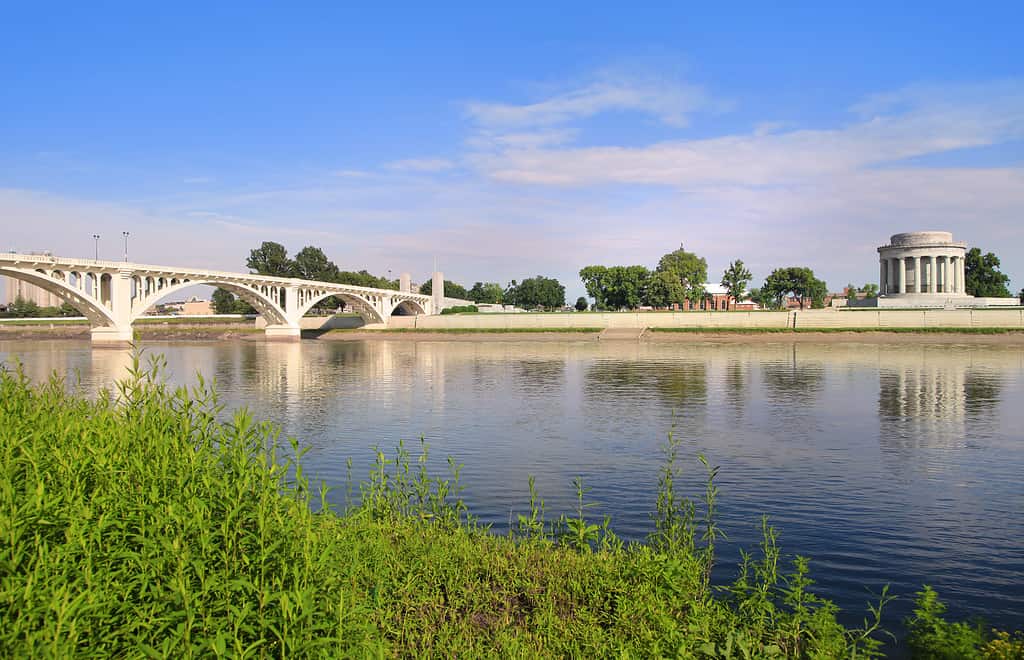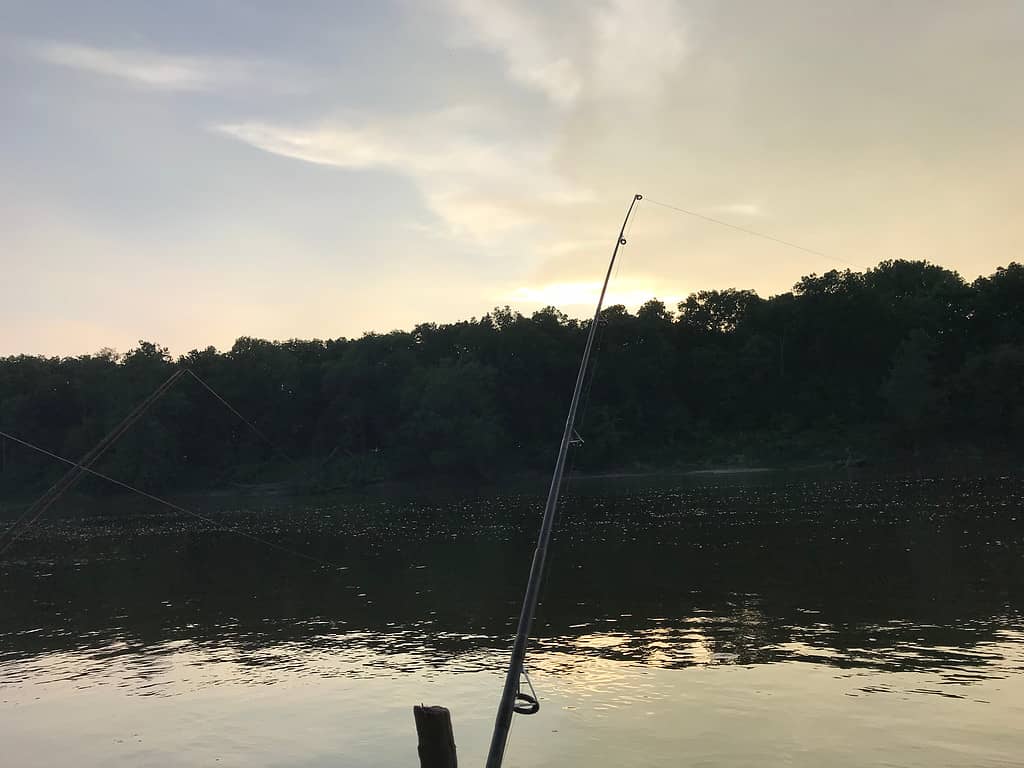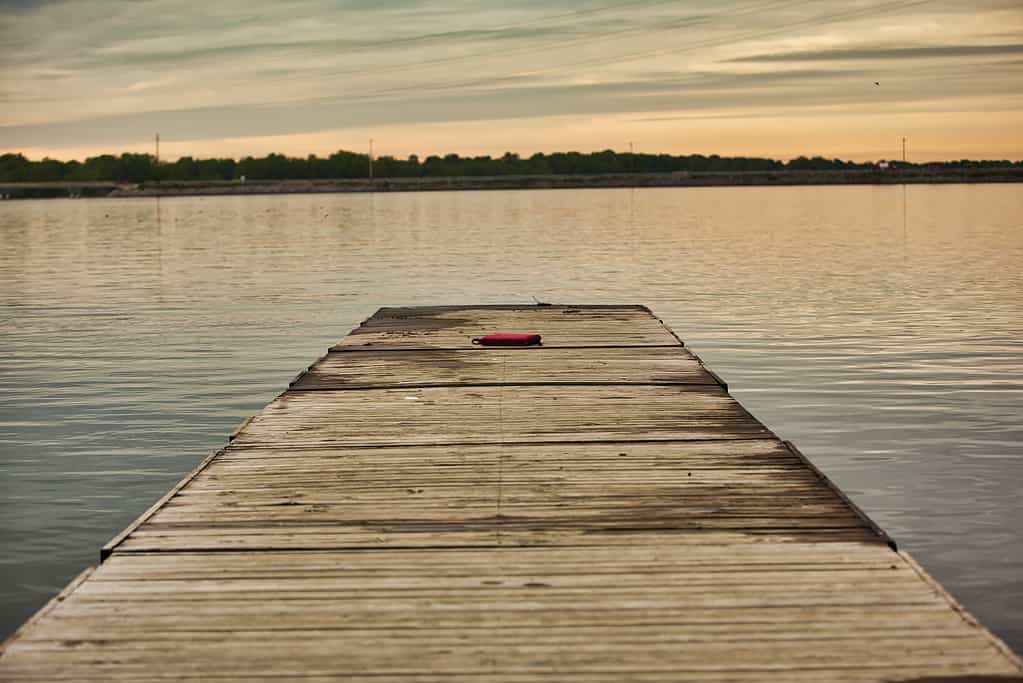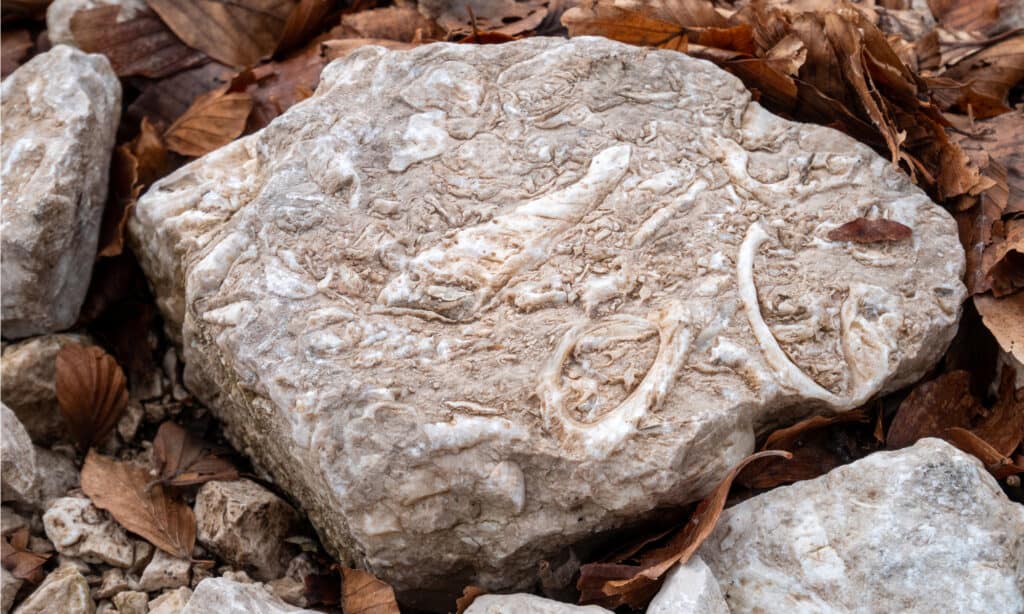The Wabash River is a significant waterway located in the Midwest region of North America. It begins in Ohio and flows through Indiana, eventually emptying out into the Ohio River. This river has played an essential role throughout history, serving as a vital transportation route for goods and people.
The Wabash River measures approximately 503 miles long, making it one of the longest rivers in Indiana. The river’s watershed covers an area of about 33,000 square miles across parts of three states: Indiana, Illinois, and Ohio.
Throughout its history, the Wabash River has been used for many purposes beyond just transportation. For example, it is also known for its rich wildlife diversity that attracts outdoor enthusiasts from all over the world. The river supports numerous species of fish, such as catfish and bass, while providing habitat to mammals like beavers and otters.
In addition to fishing opportunities on the river itself or at various lakes along its banks – including Salamonie Lake or Mississinewa Reservoir – visitors can enjoy other activities like hiking trails that follow alongside some stretches of this beautiful waterway.
Overall, whether you’re a local resident looking to explore some nearby natural beauty or an avid outdoors enthusiast searching for your next adventure destination – there are plenty of reasons why you should consider visiting this incredible part of our country!
History

The Wabash River has a complex and interesting history.
©SNEHIT PHOTO/Shutterstock.com
The Wabash River has a rich and complex history that spans thousands of years. The river has been home to numerous Native American tribes, including the Miami, Shawnee, and Potawatomi people. These indigenous groups relied on the river for transportation, fishing, and hunting.
During the 17th century, French explorers arrived in the region and established trading posts along the river. They were followed by British settlers who established farms and communities in the area during the 18th century.
The Wabash River played an important role during America’s westward expansion in the early 19th century. It served as a vital transportation route for goods traveling from New Orleans to cities like St. Louis and Cincinnati.
Throughout its history, there have been periodic floods along the Wabash River that have devastated communities along its banks. One of these floods occurred in 1913 when heavy rainfalls caused widespread flooding throughout Indiana.
In recent years, efforts have been made to preserve and protect wildlife habitats along the river’s banks through conservation programs such as wetland restoration projects.
Overall, understanding the history of this iconic waterway is crucial for appreciating its significance, both past and present.
Activity and Commerce

The Wabash River is a transportation highway.
©Joseph Sohm/Shutterstock.com
The Wabash River has been an important source of commercial activities for centuries, providing a vital transportation route for the region’s goods and commodities. Today, the river continues to play a significant role in the local economy and industry. In fact, it serves as a crucial resource for various businesses, such as agriculture, manufacturing, and energy production.
One of the primary commercial activities that take place on this river is transportation via barges. Barges carry bulk materials such as coal, grain, fertilizer, petroleum products, and construction materials along the river’s navigable channel. This mode of transport is cost-effective compared to other modes like trucks or railroads, which makes it appealing to many industries.
Moreover, recreational boating also contributes significantly to the economy, with several marinas located along its banks offering boat rentals and other tourism-related services. The Wabash River is also rich in fish species making fishing another popular activity among visitors and locals alike.
The river plays an essential role in generating hydroelectric power, too. There are hydroelectric dams situated on some stretches of this waterway supplying electricity across Indiana State.
Size

The Wabash River is 503 miles long.
©BBViews/Shutterstock.com
When it comes to discussing the Wabash River, one of the most important factors that people often want to know about is its size. This iconic river stretches a total length of approximately 503 miles, making it an impressive natural feature within the region. In terms of basin size, the Wabash River drains an area spanning around 33,400 square miles – a truly expansive watershed encompassing parts of Ohio and Indiana.
But perhaps even more notable than its length or basin size is the discharge rate of this mighty waterway. At its peak flow during flood seasons in springtime, the Wabash River can reach up to 90,000 cubic feet per second! Even during low-flow periods later in the year, this river still manages an impressive average discharge rate of roughly 20-30 thousand cubic feet per second.
Overall then, whether you’re interested in exploring all that, this river has to offer for outdoor activities like kayaking and fishing or simply want to marvel at its grandeur from afar – understanding just how sizable and powerful the Wabash River truly is can help deepen your appreciation for this remarkable natural wonder.
Depth

The Wabash River is 30 feet deep on average.
©Brian C. Gossard/Shutterstock.com
The depth of a river can play a significant role in determining what types of wildlife are present, as well as how they behave and interact with their environment.
The Wabash River is known for having varying depths depending on where you are along its length. At some points along the river, you may find shallow areas that measure only a few feet deep. In other areas, however, the Wabash can reach depths of up to 50 feet or more! The average depth of the Wabash River is 30 feet.
These varying depths create unique opportunities for different types of aquatic species to thrive in their respective environments. For example, shallower sections may be home to fish like sunfish or bluegill, which prefer warmer waters closer to the surface. Conversely, deeper areas may be host to larger predatory fish like bass or catfish, which require cooler temperatures and access to deeper water.
Source

The Wabash River originates in Ohio.
©aceshot1/Shutterstock.com
The Wabash River originates in western Ohio near Fort Recovery and flows westward into Indiana before eventually joining the Ohio River near the town of Mount Vernon.
Throughout its course, the Wabash River winds through a variety of landscapes, including forests, farmland, and wetlands. It also passes through several cities and towns along the way, including Lafayette and Terre Haute.
The source of the Wabash River is primarily fed by small streams and creeks that flow down from surrounding hillsides. As the river travels downstream towards the Ohio River confluence, it gradually widens and deepens due to additional tributaries adding their waters to it.
At its broadest point near Vincennes, Indiana, the Wabash can span up to two miles across during periods of high water. This impressive size has made it an important transportation route throughout history for trade goods such as timber and coal.
Despite being heavily altered by human activity over time – with dams constructed at various points along its length – much of the natural beauty of this majestic river remains intact today. Whether you enjoy fishing or simply taking in stunning views from scenic overlooks along its banks, the Wabash River offers something for everyone who appreciates nature’s wonders.
Fish

Catch-and-release fishing is a common practice among fishermen on the Wabash River.
©iStock.com/Grandbrothers
The Wabash River boasts a diverse array of fish species, making it a popular destination for anglers and nature enthusiasts alike. Some of the most commonly found fish in the river include bass, catfish, crappie, sunfish, and various types of carp. Anglers are often drawn to the Wabash River due to its reputation as an excellent smallmouth bass fishing location.
While some areas may be more heavily populated with certain types of fish than others, depending on factors like water temperature and depth, there is always something new to discover in this thriving ecosystem. Whether you’re an experienced angler or just looking for a peaceful day by the water’s edge, exploring all that the Wabash River has to offer is sure to be a rewarding experience.
Geology

the Wabash River has white limestone rocks at the bottom
©Giuma/Shutterstock.com
The geology of the Wabash River is an interesting topic to explore. The river flows through a variety of geological formations, including limestone, sandstone, shale, and coal seams. These formations were created over millions of years through various natural processes such as erosion, sedimentation, and volcanic activity.
The limestone found in the area was formed during the Devonian period when shallow seas covered much of what is now North America. This rock type can be seen in many places along the river’s banks and provides important habitat for a variety of plant and animal species.
Sandstone formations are also common in the Wabash River basin. Sandstone forms from layers of sand that have been cemented together over time by minerals such as silica or calcite. These rocks are often used as building materials due to their durability and resistance to weathering.
Shale is another type of rock that can be found along the Wabash River. This fine-grained sedimentary rock is composed primarily of clay particles that have been compacted over time into thin layers or beds.
Finally, coal seams are present throughout much of Indiana, including areas near the Wabash River Basin, where mining had taken place since the early 19th century until recently when it became less profitable due to cheaper alternatives like natural gas extraction, which doesn’t require deep drilling nor environmental issues related with fossil fuels combustion.
Recreational Activities

Boating, kayaking, and skiing are a few fun activities for people on the Wabash River.
©iStock.com/sportpoint
The Wabash River is a popular destination for outdoor enthusiasts looking to enjoy a variety of recreational activities. Whether you’re an avid angler, or birdwatcher, or just love spending time in nature, this river has something for everyone.
Fishing is one of the most popular activities on the Wabash River. The river’s diverse ecosystem supports a wide range of fish species, such as smallmouth bass and catfish – making it an ideal spot for both novice and experienced anglers alike. You can also go canoeing or kayaking on the calm waters while enjoying scenic views along its banks.
For those who prefer land-based activities, hiking trails are available that follow the course of the river through lush forests and fields. Opportunities abound to see wildlife, including deer, wild turkey, and various songbirds, throughout your walk.
Additionally, there are several parks located near the Wabash River which provide visitors with picnic areas, playgrounds, camping sites, swimming pools, etc. On the Wabash River, families can come together and enjoy quality time outdoors while being surrounded by beautiful natural surroundings.
Overall, whether you’re seeking adventure or simply want to relax amid serene surroundings whilst appreciating nature in all its glory – The Wabash River offers something special for everyone!
The photo featured at the top of this post is © Brian C. Gossard/Shutterstock.com
Thank you for reading! Have some feedback for us? Contact the AZ Animals editorial team.






